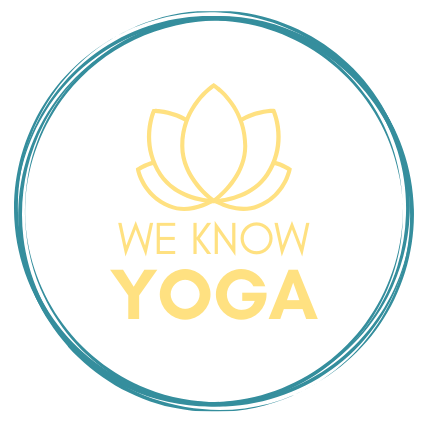Yoga is a whole being practice that helps us connect the mind and the body, so we can learn how our emotions affect our physical and mental well-being. Not only is yoga a practice to build strength and flexibility in the body, but it can also help you learn how to cope with stress, anxiety, lack of motivation and low self-esteem.
Yoga can help you feel more centered and more peaceful with yourself, which means you are more likely to show that same compassion to others. Here are nine poses to help calm reactivity.
Standing Forward Fold
- Stand in mountain pose.
- Place your hands on your hips and take a deep breath in.
- Reach your hands up and exhale while bending forward at the waist.
- Keep going until your hands rest on the ground next to your feet. If this is painful, you can bend your knees deeply or alternatively hold onto the elbows.
- Hold for at least 5 deep breaths.
- Tighten your core and bend your knees to rise.
Shoulder Stand
- Lie on your back.
- Keep your legs pressed together, with your ankles touching and feet flexed.
- Press your arms and palms into the ground.
- Inhale, lift your legs, and stretch them fully at a 90-degree angle.
- Exhale and raise your body.
- Bring your hands to your lower back to support your body as it raises.
- Raise the body as straight as possible with the weight of your body resting on your shoulders (not on your neck or head).
- Point your toes at the ceiling.
- Breathe gently and normally for 30 seconds or no more than three minutes.
Dancer
- Plant both legs on the ground, feet hip-width apart.
- Bend one knee and brink your foot up by your glute. Grip the ankle for a calf stretch.
- Lean forward and lift your ankle towards the sky.
- Extend your free hand in front of you. If that is too uncomfortable for your balance, use your free hand to hold on to the wall or a chair.
- Take 5 deep and even breaths.
Warrior 2
- Spread your legs wide.
- Point your hips and ankles to one side.
- Bend the front leg to a 90-degree angle.
- Stretch your arms to your sides and lower your shoulders.
- Keep your hips even, like they are a bowl that you don’t want soup to spill out of.
- Breathe in deeply and evenly for 10 seconds.
Child’s Pose
- Keep your feet hip-width apart.
- Kneel on your hands and knees, and rest your head between your arms and your palms facing down.
- Place the tops of your toes on the floor, keeping them relaxed.
- Exhale and lower your bottom toward your heels.
- Bend your neck so your forehead touches the floor, and bring your arms by your thighs.
- Hold for at least 30 seconds.
Hero’s Pose
- Begin by sitting on your knees.
- Press your ankles toward the floor, and bring your thighs and calves together.
- Roll your ankles out so that the tops of your feet are flat on the ground and the toes are pointing directly behind you.
- Place your palms on your knees, face up. Close your eyes.
- Breathe in and out deeply and slowly for 30 to 60 seconds.
Runner’s Lunge
- Begin standing. Step one leg forward.
- Bend the front knee, keeping it in line with your ankle, and stretch your back leg.
- Press your hands flat against the ground on each side of your leg. If that is painful, use blocks under your hands.
- Raise your arms over your head, extending them to the sky, and bring your palms together.
- Breathe in and out five times, and put space between your ears and your shoulders.
- Roll your shoulders back and down.
- Place your hands on the ground, step back into plank or kneeling plank, and bring the other leg forward.
Tree Pose
- Stand straight with feet flat on the ground, hip-width apart.
- Lift one leg and place the foot on the inner part of your opposite calf or thigh.
- Avoid placing your foot on the knee.
- When your balance is steady (hold a chair or wall if you need to), stretch your arms out to the side or upward and connect your palms.
- If you feel stable, consider bringing your palms behind your back in reverse prayer pose.
Savasana (Corpse’s Pose)
- Lie down on your back and keep your body straight.
- Keep your arms at the body’s sides, or make cactus arms if you have shoulder discomfort.
- Keeping your palms facing up.
- If you are having trouble clearing your mind, try counting your breaths or other breathing exercises.
- Hold the position for a minimum of five minutes. Set a timer so you don’t have to think about anything but letting go.
When you feel tense or tight in your mind or body, yoga can provide both an immediate and long-term release. Explore the deeper roots of yoga, not just the physical benefits, with these nine poses that can boost your mental and emotional health.
